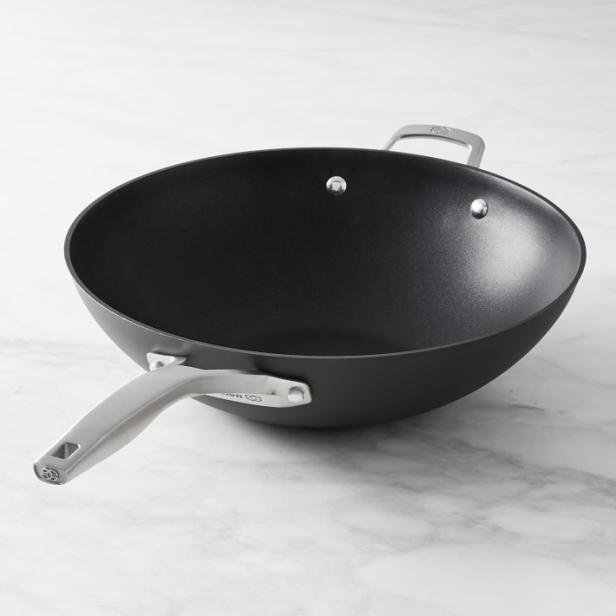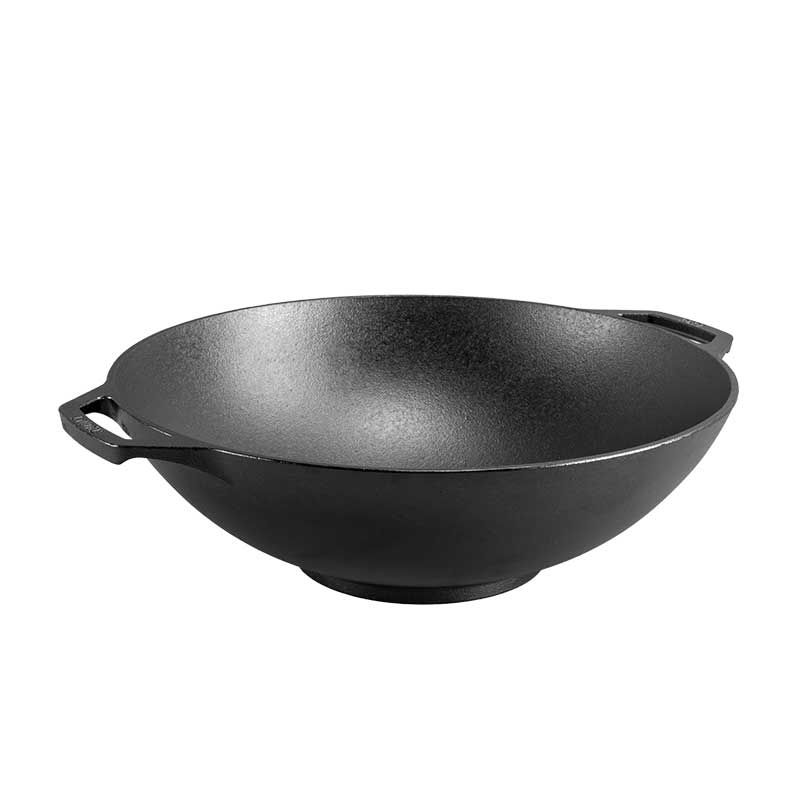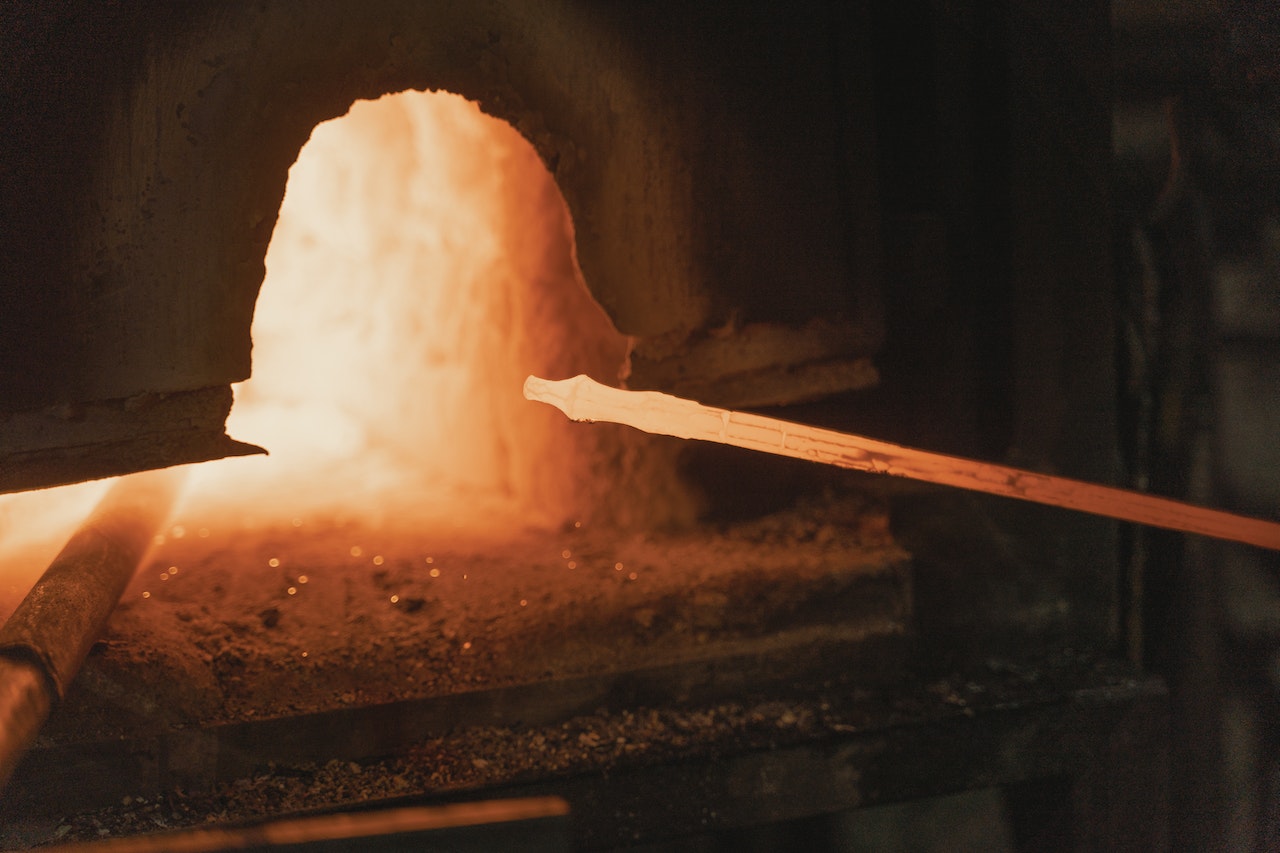When it comes to cooking up a delicious stir-fry, having the right wok is essential. Woks come in a variety of materials, each with their own pros and cons. In this article, we’ll explore the advantages and disadvantages of each.
First, let's take a look at the different types of wok materials on the market:

Aluminum Woks
Aluminum woks are lightweight and heat up quickly; however, they can be difficult to control due to how quickly they heat up. They tend to heat up food unevenly and can easily burn the food. Additionally, they are not as durable as other materials and can warp easily. They also require special cleaning solutions to prevent discoloration.
Stainless Steel Woks
Stainless steel woks are sturdy and easy to clean, but they are not the best conductors of heat. This can lead to uneven cooking and hot spots. They also don't have any non-stick qualities, so they aren't ideal for stir-frying. Stainless steel woks are great for cooking up meals that are acidic like pasta sauce or tomato-based stews because the stainless steel won't react with the acids in the food.

Non-Stick Woks
Non-stick woks are often coated with Teflon or ceramic. They are incredibly non-stick when they are brand new, but the coating degrades at high temperatures and they are easily scratched. There have been many controversies surrounding whether the coatings used are safe or not. Many sources say that once they are exposed to high heat or scratched, they become harmful to your health. When exposed to high heat, some coatings emit toxic fumes that cause Polymer Flu Fever in people and death in birds. Of all the materials that woks can be made of, non-stick coated woks are the least favored because of the potential health risks associated with them. They are ideal for cooking delicate foods that don't require high heat and constant stirring such as crepes or omelettes.

Cast Iron Woks
Cast iron woks are durable and excellent at retaining heat. However, they are also heavy and take a long time to heat up. Additionally, cast iron steel tends to be brittle due to its high carbon content, and it has a higher chance of shattering when it is tossed on the stovetop. This is not ideal because woks are often used for stir-frying, and that often involves tossing.

Carbon Steel Woks
There are two types of carbon steel woks: machine pressed and hand-forged. The elemental composition of their materials are virtually identical; however, they differ in the way they are made, so there are some key differences between the way they handle food.
All carbon steel woks develop a natural non-stick coating on the surface through a process called "seasoning". Seasoning a wok involves applying a layer of oil on the surface and heating it past its smoking point. When heated, the oil will seep into the microscopic pores and create a layer of polymerized oil on the surface of the wok. This layer is what creates the natural non-stick surface that allows food to easily slide around the wok. A key feature of carbon steel is that its non-stick properties get better after every use, and an old carbon steel wok is often as non-stick as Teflon and is free of harmful chemicals.
Machine-pressed carbon steel woks are often pressed from thin sheets of metal. The thinness of the metal allows it to conduct heat very quickly. This is essential for Chinese cooking because high heat gives the food wok hei, therefore making it the favored wok of most professional chefs. However, an important aspect to consider is that most professional chefs have access to an industrial grade gas stove that burns at over 100,000 BTU, whereas most homes have burners that burn at around 7,000 BTU. This means that they have access to way more firepower than most normal people do, and that makes a big difference in the way your food tastes because as soon as you add ingredients into your wok, the wok's temperature drops considerably and your stir-fry turns soggy.
Hand-forged woks on the other hand are made by heating iron until it's red hot, and hammering it over 100,000 times until a wok is formed. The resulting wok is thicker than a machine-pressed wok and can retain heat much better. The heat retention that these woks offer can make up for the firepower that most homes lack. The only downside of a hand forged wok is that it is also much heavier (usually about 2kg).


